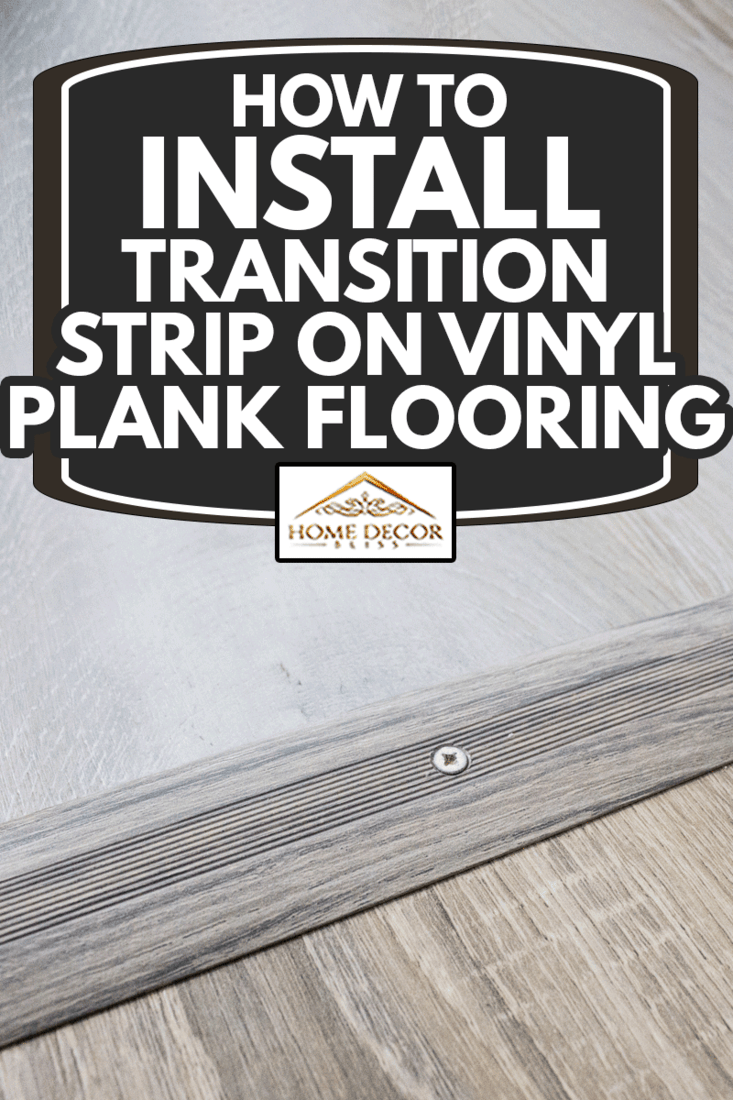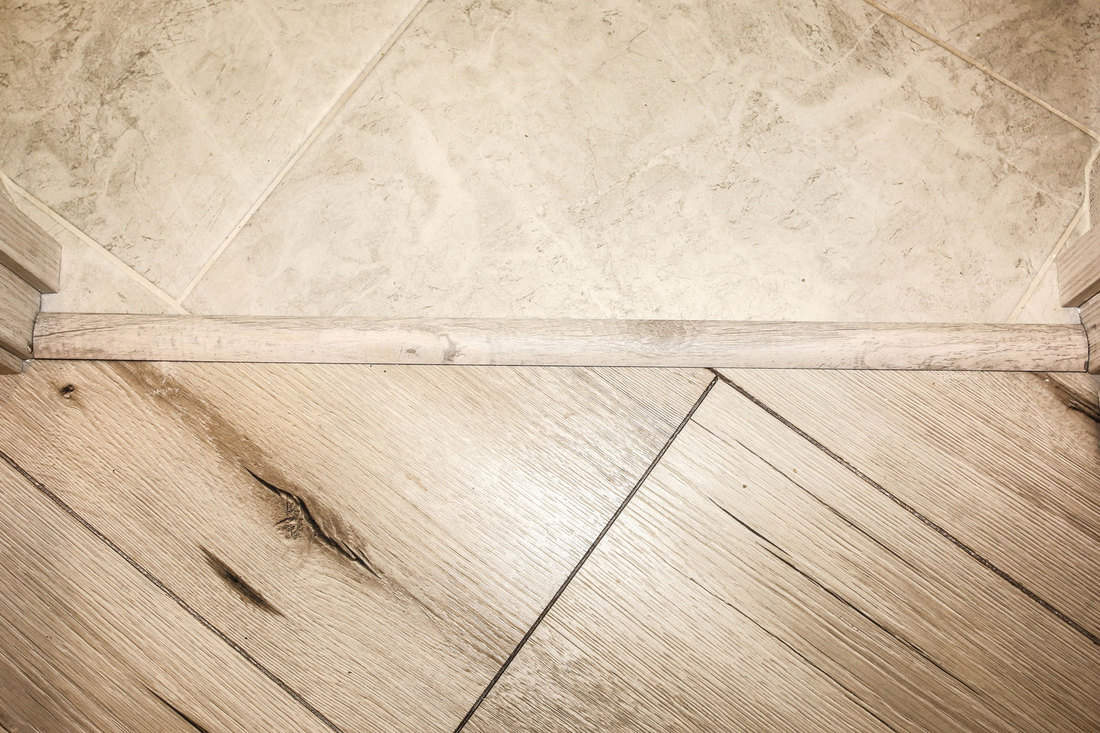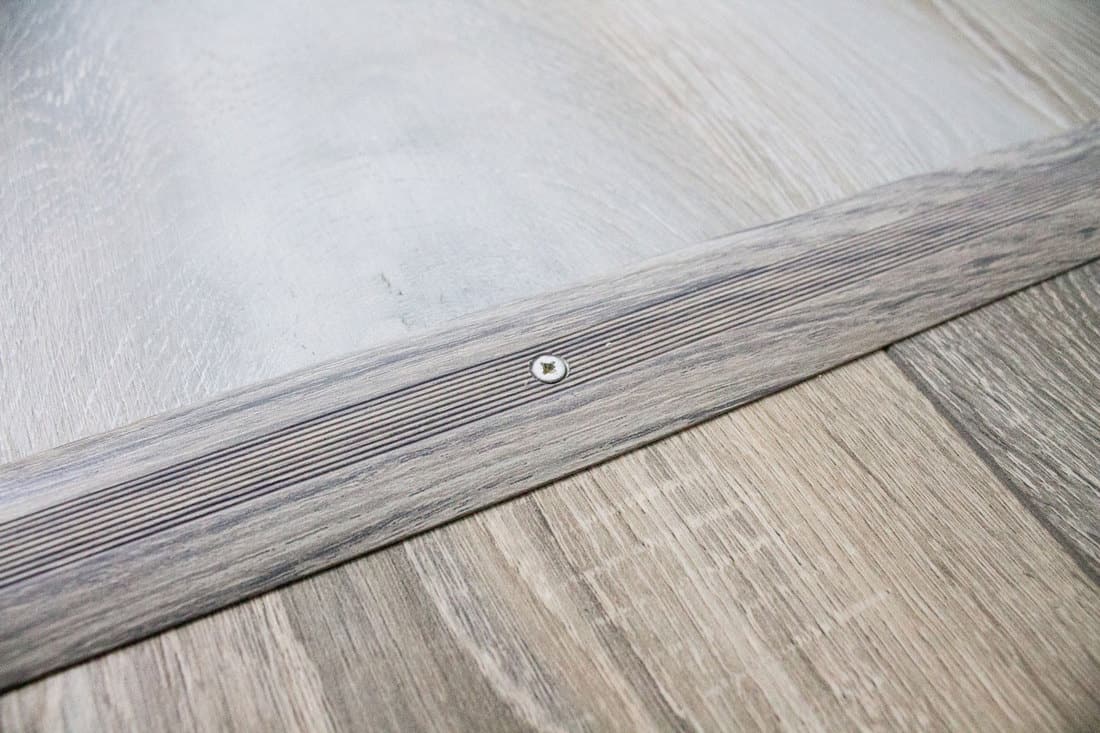How to Install a Baby Threshold Between Lvt and Carpet
Deciding the flooring for different areas of your home can be difficult. But, once you get them down, they can look great! Problems arise when the flooring differs from the flooring of another room. Ideally, it would flow seamlessly! However, since they do not, let's explore our research on how to install transition strips on vinyl plank flooring!
If you want to get a seamless transition between floorings, you will need to take several steps. Before installing the transition strip, you want to familiarize yourself with the types of strips you can use. This step matters because it will level the flooring. To install transition strip on vinyl plank flooring, follow these steps:
- Determine the two flooring types that will need to meet at a level surface.
- Based on your flooring types, choose the appropriate transition strip.
- Measure the length between door jambs.
- Cut the transition strip according to your measurements.
- Apply adhesive to the bottom of the connection base.
- Lay and secure the vinyl planks into place.
- Install a multi-purpose reducer into the base strip.
These are the general steps to installing a transition strip on vinyl plank flooring. Of course, there's still more that you might want to know! As we mentioned, you will need to become familiar with the transition strip options you have. Which one you use depends on the type of floorings you're accommodating for. If you'd like to know more, keep reading ahead.

Installing Transition Strip on Vinyl Flooring
Let's take a deeper look into the installation process!
1. Determine the Two Flooring Types
In an ideal world, you would probably use one type of flooring throughout your home. However, since different rooms require different floorings, the transition between rooms won't be as seamless as it could be. For this reason, you will need to install a transition strip to ensure people will know there might be a height difference between floors. It gives you a visual clue of what's under your feet.
The essential concern here is how thick one flooring is in comparison to the other. In our case, it will be either be:
- Vinyl to carpet
- Vinyl to tile
- Vinyl to laminate
- Vinyl to vinyl
2. Choose the Appropriate Transition Strip
Regarding vinyl plank flooring, you will need to determine the two types of flooring that will meet. To determine which transition strip works best for your situation, here's a general guideline :
- Near the same height – T-mold transition strip
- One lower than the other – Baby threshold or multi-purpose reducer
Use whichever fits your situation the most!
3. Measure the Length Between Door Jambs
From here, you will need to measure the length between door jambs. In other words, the width of the doorway between your floors. For this step, you will need a measuring tape.
4. Cut the Transition Strip According to Your Measurements
Once you've measured the width, it's time to cut the transition strip to an appropriate length. Use the measurements and make a mark on the length required. Cut the transition strip in the area that you marked. You can use tin snips, a handsaw, or a power saw for this step.
5. Apply Adhesive to the Bottom of the Connection Base
Once you've cut the strip, you will need to apply adhesive to give the connection base a firm holding to the ground. For this step, you can use an adhesive like Liquid Nails. The wide edge should face towards the direction where you will lay the planks.

Click here to see this adhesive on Amazon.
6. Lay and Secure the Vinyl Planks Into Place
This step is the easiest part of the guideline. Lay down the vinyl planks and secure them in place by pushing them down.
7. Install a Multi-Purpose Reducer Into the Base Strip
Finally, depending on the type of transition strip you are using, you will either install a multi-purpose reducer or a T-mold into the gap firmly. You can use a damp cloth to remove excess adhesive. To ensure it dries well, you can place tape over the molding or weigh it down using heavy items.
For you visual learners, here's a YouTube video for demonstration purposes:
Why Do You Need Transition Strips?
Transitions strips are how you delineate between two types of flooring. Without them, the transition between two types of flooring may look dull and jarring. More importantly, as some suggest , they are a means of telling you what's under your feet.
It might not seem essential but, if you've ever tripped when transitioning between different floorings, a transition strip might have saved you the slight scare. It bridges two floors of different levels. Lastly, it covers the gap between the two floorings.
Types of Transition Strips

As we mentioned above, you will have to become familiar with the transition strip options you have. If you'd like to know the types there are, let's take a look.
4-in-1 Transition Strip
Four-in-one transitions strips are, as the name implies, versatile transition strips. They come with interchangeable parts to accommodate different types of flooring. The components they come with are:
- Metal channel
- T-molding
- Carpet strip
- Hard surface reducer
- End molding
T-Strip
A T-strip is handy when you want to join two hard surfaces of the same height. As the name implies, the strip has a "T" shape. When put in use, you force the vertical portion of the strip down into a gap with some sealant. They're available in many colors. Though, it might be hard to find one that matches both floors.
End Cap
End Cap transition strips are common in areas where the floor meets anything vertical . Regarding flooring, it's used to transition from flooring having different heights. Unlike T-moldings, they do not come with a track. As the name implies, it ends a particular floor.
Carpet to Vinyl Transitions
No Transition
There are three ways to transition your carpet with vinyl plank flooring. The first option is to go for no transition at all. This method involves folding the edge of your carpet and stapling it to hold it down. Though, depending on the carpet, you might want to seek a professional's advice on how to hold it in place.
With this method, you will have a seamless transition without the need for a transition strip. The vinyl planks should slide under the edge of the carpet without any trouble.
T-Molding
As we covered above, you can also use a T-molding transition strip to transition from vinyl to carpet. The process is similar to the one above! The only thing to keep in mind is that the carpeting should go over the track of the T-molding. On the other edge of it, install the vinyl planks. Finally, snap in the T-molding.
End Cap
The last option you have is using an end cap. It's one of the less popular options that involves a bit of effort. End caps do not have a track. So, if you want more control over how the edges look, this might not be the option for you.
For a visual guide on all three options, here's a YouTube video for a demonstration:
Hardwood to Vinyl Transitions
If you're now looking to transition from hardwood to vinyl, it'd be good news to hear that it doesn't differ from the previous transitions. The reason being that both hardwood and vinyl sit at similar heights. So, if you've been following along, a T-molding transition strip will work to transition between the two.
Regarding installation, there is no need to change the steps we covered above. The process will follow the same procedures. Sand and glue the T-molding track. You will need both of the floorings to meet the edge of the track. Finally, snap down the T-molding.
Tile to Vinyl Transitions
Tile to vinyl is where the changes start to occur. Vinyl can be a relatively thin flooring type. In comparison, tiles tend to be thick. Without a transition strip, you'd have people tripping most of the time! That's not to mention the possible damage to the flooring from consecutive hits.
For this reason, you'd want to use a reducer transition strip to meet the two floorings. It looks similar to an end cap. Though, it does not end the flooring. Reducers are used to transition between floors of different heights. However, like a T-molding transition strip, they come with a track.
Installing Reducer Transition
Installation is simple for this type of transition strip. In some cases, you might not need to use the track. Instead, you'll apply adhesive to the gap. Do not apply a large strip of adhesive. You can do small patches of it about 5-6 inches apart.
From here, you can install the reducer. The side that comes down should be facing the vinyl. For visual guidance, here are two YouTube videos to help:
Transition Strips Not Sticking – What To Do
Fixing the transition strips in place can be a challenging process. You might have heavy traffic that could be interfering with the drying process. If it's not sticking, there could be a problem with the adhesive you use, or it may need assistance being kept in place.
The first option is to place to tape down the strip for 24 hours. Alternatively, you can set heavy items on it to hold it in place. If these methods do not work, there may be a problem with the adhesive you are using. As some suggest , two-part epoxy adhesives, hot melt adhesives, and urethane adhesives are your best bet for transition installation.
Final Takeaway

Installing a transition strip can seem like a daunting task. It's one of the overlooked jobs we have to do. But, when you get the installation right, it prevents tripping accidents and gives an overall pleasing look! We hope you found the information above insightful!
Before you go, do you have other transition strip concerns? Do you wonder how much space to leave for one? To find out more, check out our post here .
Additionally, do you have other areas that need a transition strip? Would you like to learn how to install one on concrete? For more information, check out our post here . Until next time!
How to Install a Baby Threshold Between Lvt and Carpet
Source: https://homedecorbliss.com/how-to-install-transition-strip-on-vinyl-plank-flooring/
0 Response to "How to Install a Baby Threshold Between Lvt and Carpet"
Post a Comment